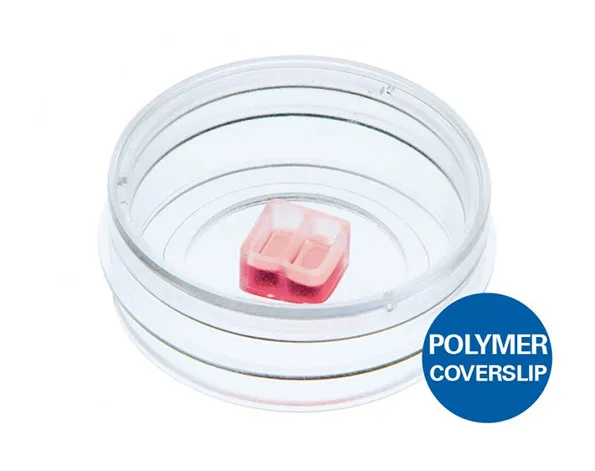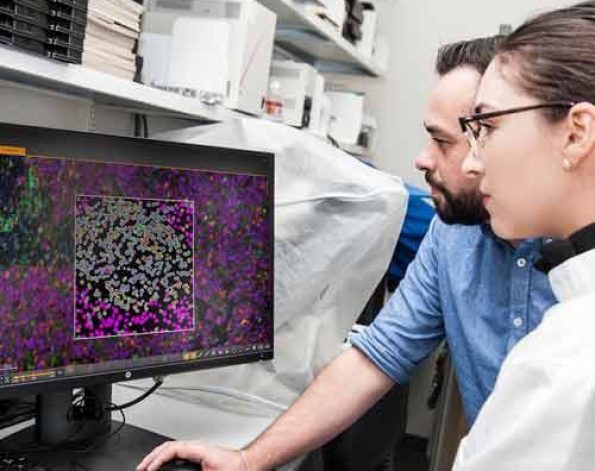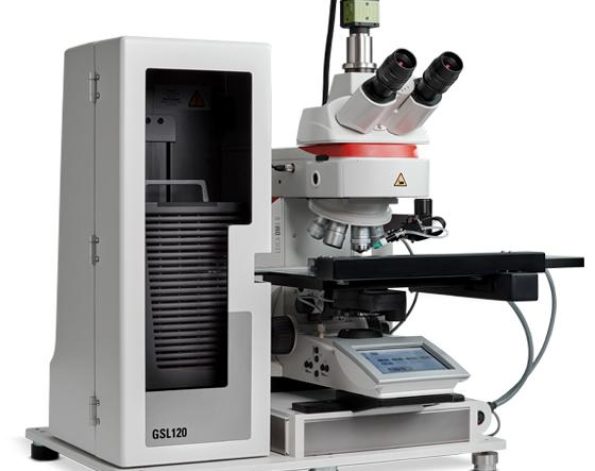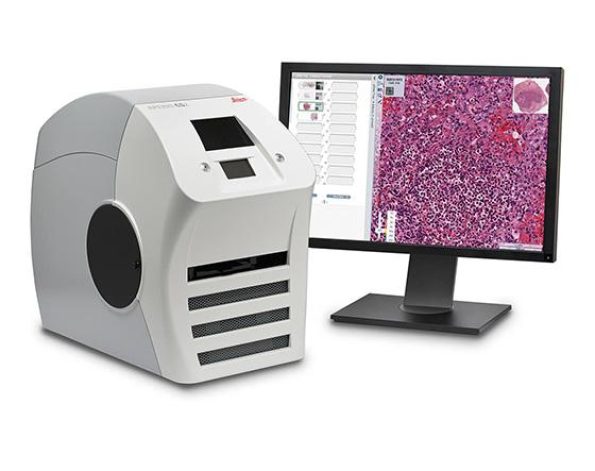จานเพาะเลี้ยงเซลล์พร้อมซิลิโคนแบบ 2 ช่อง – สามารถกำหนดช่องว่างระหว่างเซลล์ สำหรับการทดลองแบบ wound healing, การทำ cell migration, การทำ 2D invasion หรือการเลี้ยงเซลล์
- เหมาะสำหรับการทดลองแบบ wound healing
- สามารถทำการทดลองซ้ำได้เนื่องจากช่องว่างของส่วนที่เป็นซิลิโคนมีขนาด 500 µm เท่ากันทุกชิ้น โดยซิลิโคนติดแน่นกับก้นจานมั่นใจได้ว่าไม่มีการรั่วซึมของอาหารเลี้ยงเซลล์
- สำหรับการทดลอง 1 experiments
- มีเทคโนโลยี ibiTreat surface เพื่อการเจริญเติบโตของเซลล์ในอุดมคติ
A 2 well silicone insert with a defined cell-free gap, suitable for wound healing, migration assays, 2D invasion assays, and co-cultivation of cells
- Complete solution for wound healing experiments, requiring only a few steps from sample preparation to image analysis
- Reproducible experiments owing to: a defined 500 µm cell free gap, no leakage during cultivation, and no material being left behind after the insert’s removal
- Individual inserts for single experiments
- Ideal cell growth on ibiTreat surface
- Surface Modification: ibiTreat: #1.5 polymer coverslip, tissue culture treated, sterilized
Product Variation: in µ-Dish 35 mm, low
Pcs./Box: 30 - Surface Modification: ibiTreat: #1.5 polymer coverslip, tissue culture treated, sterilized
Product Variation: in µ-Dish 35 mm, high
Pcs./Box: 30
Applications
Specifications
| Number of wells | 2 |
| Outer dimensions | 8.4 x 8.4 x 5 mm (w x l x h) |
| Volume per well | 70 µl |
| Growth area per well | 0.22 cm² |
| Coating area per well | 0.82 cm² |
| Width of cell free gap | 500 µm +/- 100 µm |
| Material | Biocompatible silicone |
| Bottom | No bottom – sticky underside |
Technical Features
- Culture-Insert 2 Well, pre-inserted into:
- µ-Dish 35 mm, high (imaging dish with standard 12 mm walls), or
- µ-Dish 35 mm, low (imaging dish with low 7 mm walls)
- Biocompatible silicone material with adhesive underside
- Ready-to-use: the Culture-Insert is already placed in the µ-Dish 35 mm, high or µ-Dish 35 mm, low
- Clean surface after insert removal without remaining material
- Find full specifications and technical details here: µ-Dish 35 mm, high | µ-Dish 35 mm, low
Culture-Insert 2 Well in µ-Dish 35 mm, high
Culture-Insert 2 Well in µ-Dish 35 mm, low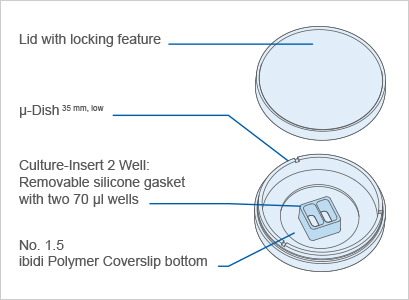
Principle for Wound Healing and Migration Assays

xperimental Examples
Visualization of Cell Migration in Wound Healing Assays
Wound healing and migration assays are done by seeding cells into the Culture-Insert 2 Well. After cell attachment, a cell-free gap is created in which the cell migration can be visualized.
Live cell imaging of a wound healing and migration assay using the MCF7 cell line. Objective lens 10x, phase contrast microscopy.

Cell Invasion of Co-Culture Assays
The Culture-Insert 2 Well can also be used for seeding two different cell types. After the removal of the insert, the cell fronts can be analyzed for their invasional behavior.

Endothelial cells (left) and trophoblast cells (right) were cultured in an ibidi µ-Dish 35 mm, high with a Culture-Insert 2 Well. Cells were allowed to migrate towards each other after removal of the insert prior to fixation, staining, and imaging. Cells were stained with an antibody against VE-cadherin (magenta), phalloidin for F-actin (cyan), and Cytokeratin 8 (yellow). Image used with permission from Derek Sung.
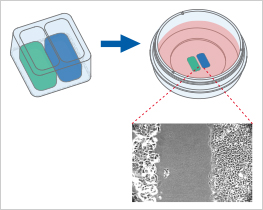
Culture-Inserts vs. Scratch Assay
At first glance, the methods of scratching and placing a Culture-Insert seem to be two very similar approaches to create a cell-free gap. However, at a closer look, these two methods differ in important aspects that could influence the outcome of the assay:
| ibidi Culture-Inserts | Scratch assay | |
| Gap creation | Cell seeding into designated areas | Scratching the cell surface with a needle or pipet tip |
| Gap size | Defined | Varying (i.e., not reproducible) |
| Gap surface residues | No | Extracellular matrix residues possible |
| Vessel surface damage | No | Yes, due to mechanical scratching on the surface |
| Cell damage | No | Yes, due to scratching the cells |
| Segregation & signaling of necrotic/apoptotic cells | Low | High |
| Internal reference * | Yes | No |
